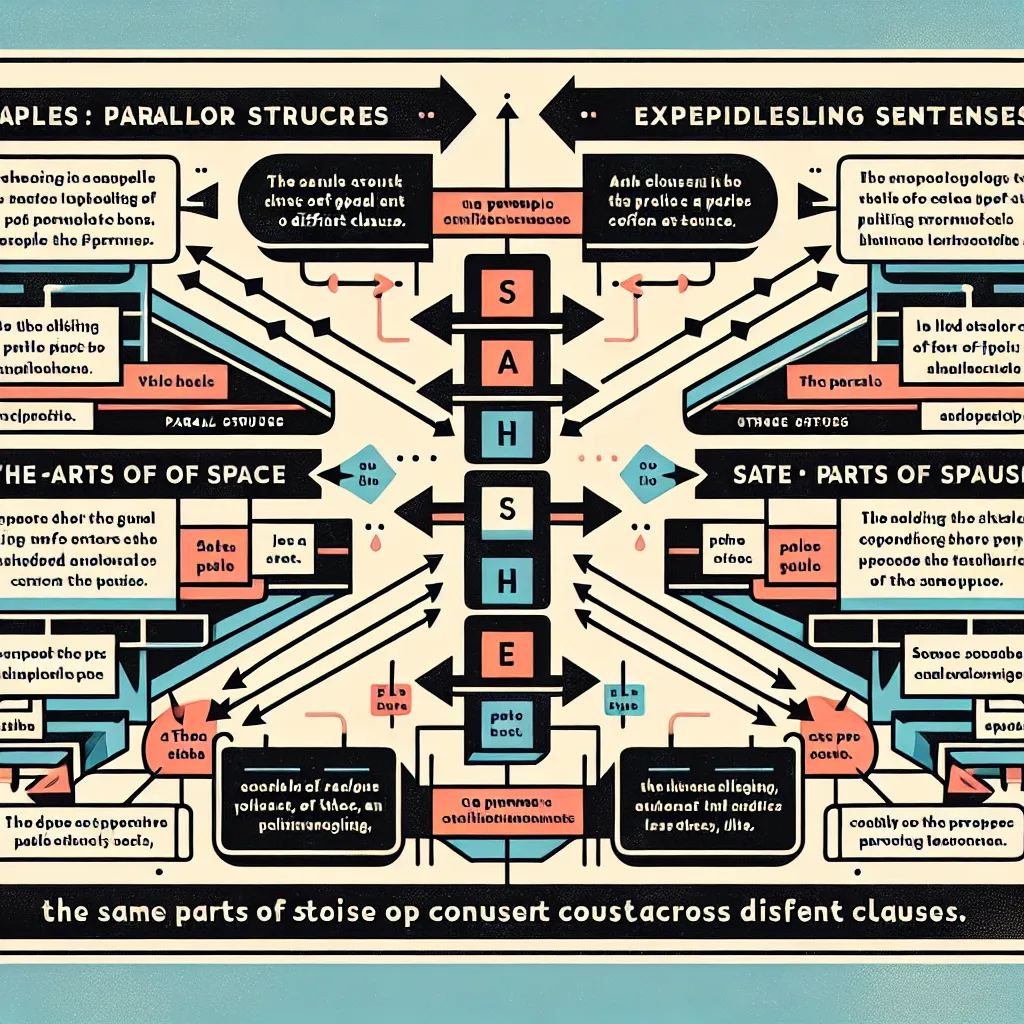Parallelism in clauses is a crucial grammatical concept that frequently appears in IELTS exams. Understanding and effectively using parallel structures can significantly enhance your writing and speaking skills, leading to higher scores. Let’s delve into this important topic and explore how you can leverage it to excel in your IELTS test.
What is Parallelism in Clauses?
Parallelism in clauses refers to the use of similar grammatical structures in a sentence or paragraph to create balance and clarity. This technique is particularly important in academic writing and formal speaking, both of which are essential components of the IELTS exam.

Importance in IELTS
In IELTS, parallelism is crucial for:
- Writing Task 2 essays
- Speaking Part 3 discussions
- Reading comprehension
- Listening for complex structures
Examiners look for the ability to use parallel structures as a marker of advanced language proficiency. Let’s examine how parallelism is applied across different sections of the IELTS test.
Formula and Grammatical Structure
The basic formula for parallelism is:
[Element A] + [Coordinating conjunction] + [Element B]
Where Element A and Element B are grammatically parallel.
For example:
- She likes swimming and reading.
- The project was both challenging and rewarding.
- We must either increase our revenue or decrease our expenses.
In these examples, the bolded parts show the parallel structures. Notice how the grammatical forms match on both sides of the coordinating conjunction.
Application in IELTS Writing
Task 2 Essay Writing
In IELTS Writing Task 2, parallelism can elevate your essay structure and coherence. Consider this example:
“Education should focus on developing critical thinking skills, fostering creativity, and promoting teamwork.”
This sentence uses parallel gerund phrases to list the objectives of education. Let’s break it down:
- Developing critical thinking skills
- Fostering creativity
- Promoting teamwork
Each element starts with a gerund and is followed by its object, creating a smooth, balanced structure that’s pleasing to read and demonstrates linguistic sophistication.
Task 1 Report Writing
Even in Task 1, parallelism can be useful:
“The graph shows a steady increase in population from 1990 to 2000, a sharp decline in the following decade, and a gradual recovery beginning in 2010.”
Here, the parallel structure helps to clearly organize the information:
- a steady increase in population
- a sharp decline
- a gradual recovery
Each phrase follows the pattern: [article] + [adjective] + [noun] + [additional information]
Enhancing IELTS Speaking Responses
In the Speaking test, particularly in Part 3 where more complex answers are expected, parallelism can make your responses more coherent and impressive:
“I believe that technology has improved communication, has revolutionized education, and has transformed the workplace.”
This response uses parallel past perfect tense structures to emphasize the impact of technology across different areas.
Advanced Usage for Higher Band Scores
To aim for Band 7 and above, consider using more complex parallel structures:
“Not only does regular exercise improve physical health, but it also enhances mental well-being.”
This sentence uses the “Not only… but also…” structure, which is more sophisticated than simple coordinating conjunctions. It demonstrates a higher level of grammatical control and vocabulary usage.
For Band 8 and 9, you might incorporate parallelism in more nuanced ways:
“The more we invest in renewable energy, the less dependent we become on fossil fuels, and the better our chances of mitigating climate change.”
This example uses parallel comparative structures to create a compelling argument, showcasing advanced language skills.
Common Mistakes to Avoid
-
Mixing grammatical forms:
Incorrect: “She enjoys swimming and to read books.”
Correct: “She enjoys swimming and reading books.” -
Inconsistent use of articles or prepositions:
Incorrect: “The company focuses on quality products, customer service, and on innovation.”
Correct: “The company focuses on quality products, customer service, and innovation.” -
Uneven sentence elements:
Incorrect: “The course offers training in web design, coding, and how to market your skills.”
Correct: “The course offers training in web design, coding, and marketing skills.”
Always ensure that each element in a parallel structure is grammatically equivalent.
Conclusion
Mastering parallelism in clauses can significantly enhance your IELTS performance across all sections of the test. By using parallel structures effectively, you demonstrate a high level of English proficiency, which is crucial for achieving top band scores. Practice incorporating these structures into your writing and speaking to make your language more fluid, coherent, and sophisticated.
Remember to look out for parallel structures in the Reading and Listening tests as well, as understanding them can aid in comprehension and answering questions accurately. With consistent practice and attention to detail, you’ll find that parallelism becomes a natural part of your English expression, setting you up for success in the IELTS exam and beyond.